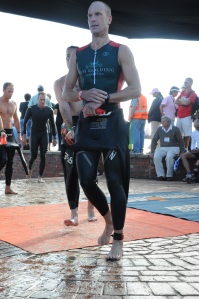 Every time I am presented with a kiddie’s birthday party invite, I cringe. I immediately fabricate any number of seemingly plausible excuses, none deemed acceptable to management.
Every time I am presented with a kiddie’s birthday party invite, I cringe. I immediately fabricate any number of seemingly plausible excuses, none deemed acceptable to management.
A recent Sunday afternoon party rates as one of the worst I have had the displeasure of attending with my two little princesses. I say princesses because I have learned from these parties that anything other than a boy is a princess. It is a fact that little boys become horrible monsters at birthday parties.
It is also a fact that kiddies’ birthday parties should be required to be a pleasurable experience for the hapless parents who are forced to attend. This was not the case on Sunday. It was a marathon affair complete with the scariest piñata I have ever witnessed. The best part of the afternoon, an afternoon I will never get back I might add, was the single warm beer I was offered. I assumed the defensive role of ‘strong and silent man’ for the duration of the miserable occasion.
What follows are 10 rules to create a successful party for both kids and adults alike, which should hopefully stand you in good stead to attain the title, ‘kiddies’ party of the year.’
Rule 1. The ONLY timeslot available for kiddies’ parties is a Saturday afternoon. That is it! No other time will be permissible. A Sunday afternoon party is the equivalent of a work strategy meeting held on a public holiday.
Rule 2. A maximum of two hours will be allowed for the party. Anything longer is just plain rude. My recommendation is two o’clock until four o’clock. Less than two hours is even better. Ladies, imagine a leg wax taking only ten minutes instead of 60 minutes. Point made?
 Rule 3. A TV and the complete bouquet of sports channels are a non-negotiable. Dads do not know what to say to each other unless they can refer to the game on the screen. The larger the screen, and the greater the number of screens at the venue, the better. It’s the only activity that you can expect dads to have to participate in at the party.
Rule 3. A TV and the complete bouquet of sports channels are a non-negotiable. Dads do not know what to say to each other unless they can refer to the game on the screen. The larger the screen, and the greater the number of screens at the venue, the better. It’s the only activity that you can expect dads to have to participate in at the party.
Swimming parties for kids under eight who cannot swim are a no-no. The only dad who wants to remove any clothing at all is Tyrone’s dad, because he spends more time in the gym than he does posing in front of any mirror – but only marginally.
 Rule 4. Adult beverages shall be made available. Asking a bunch of sensible adults to engage in an often random and coerced setting can only be helped along with a slight application of social lubricant. Additionally you will notice that the amount of ‘whine’ you experience amongst the moms is in direct proportion to the amount wine you make available to them.
Rule 4. Adult beverages shall be made available. Asking a bunch of sensible adults to engage in an often random and coerced setting can only be helped along with a slight application of social lubricant. Additionally you will notice that the amount of ‘whine’ you experience amongst the moms is in direct proportion to the amount wine you make available to them.
Rule 5. Parents also need to be fed. Please don’t assume that cheese curls are a ‘children only’ snack of preference. To ensure that the dads return next year, it is imperative that you serve bacon cheese bombs.
At this point you will notice that the first five rules are adult centric. I make reference to a popular restaurant chain aiming at the ‘parents with kiddies’ market: Spur. You might remember a number of years ago how the Spur franchises struggled. The reason was pretty obvious, the food was abysmal and therefore the parents boycotted the restaurants. Fortunately for Spur owners, the problem was identified in time. The solution, vastly improved cuisine ensuring the reappearance of the parents who in turn brought children by the minibus load. I mention this for two reasons, attract the adults and your little Rhayne will have plenty of other kids to play with at her party, and,
A kiddies party held at the local Spur is a fabulous option. Yes, you guessed it! Adult beverages, plenty of sport on the multiple screens, delicious snacks, an adequate supply of child minders, and cleaning up is not your problem. The winning formula right there.
 Rule 6. The age old law of birthday party reciprocity has resulted in a spiral of rampant madness wherein each mom does her level best to outdo all the other moms on the birthday circuit. Professional party orchestration has reached pandemic proportions. Whole empires have been built from the supply and sale of party goodies and décor. Notice I made use of the word ‘décor’ and not decoration. Entire houses and properties are transformed into themed mega-parties.
Rule 6. The age old law of birthday party reciprocity has resulted in a spiral of rampant madness wherein each mom does her level best to outdo all the other moms on the birthday circuit. Professional party orchestration has reached pandemic proportions. Whole empires have been built from the supply and sale of party goodies and décor. Notice I made use of the word ‘décor’ and not decoration. Entire houses and properties are transformed into themed mega-parties.
This is what I know about kids. Open a bag of marshmallows and cheese curls and spread them over your lawn, and you will have provided endless entertainment. Kids play. It’s what they do. Less is very often more. Please, for the love of money, resist the urge to splurge. Leave the education fund intact. Remember ‘pass the parcel’ and ‘pin the tail on the donkey’? They are both ripe for a come back.
Rule 7. Entertainment is not necessary, but if you insist please avoid the clown. Clowns are downright scary. The puppeteer is an option until Johnnie gets boisterous and pulls Pinocchio and the entire mini theater into the throng of sugar-high, excited children. I have also seen a complete farmyard in a garden the size of a squash court resulting in utter mayhem.
That particular day I witnessed a petrified bunny being petted by 14 sweaty little hands at the same time as Jared was trying to yank its ears off. Then there was the small matter of goat poo being trampled through the cream coloured carpets of the home and the Shetland pony grazing on the begonias. Why? Well because Suzy had the reptile demonstration for her party and Thandi’s mom wanted to go one bigger.
 Rule 8. Aahhh, the cake. George’s mom used the Bakery on Main Road, you know, that one with the in-house award winning cake decorator. You can’t let her upstage you now can you…
Rule 8. Aahhh, the cake. George’s mom used the Bakery on Main Road, you know, that one with the in-house award winning cake decorator. You can’t let her upstage you now can you…
There is no greater joy for a kid than helping mom or dad make the cake and ice it. Besides, as soon as that sucker gets placed on the table it becomes a scramble to keep the little monsters away from it until: the candles have been lit and blown out for the third time because they keep going out, you’ve heard the world’s worst rendition of ‘Happy Birthday’, and Sipho has cut his cake. Nobody cares that it’s Ben 10 doing a batman impersonation.
What follows is a scene which upon witnessing at your first kiddies birthday ‘experience’, you swear must be a once off manic attack launched upon the cake and then the cake upon the kids. Surely this can’t be considered normal behaviour. But it’s not a once off at all, it’s an enthralling display of total lack of both discipline and upbringing repeated at every party. Usually sparked by that one little brat that nobody wants at their parties but whose creators are on the parents committee.
Rule 9. Piñatas can be fun, no matter how ugly they are. But make sure the piñata contestants are able to destroy it in a suitable number of blows.
 An ugly Hillary Clinton lookalike piñata was gleefully presented by Emily’s dad at Sunday’s party. It had to be the most robust piñata I have ever seen. A myriad of dainty four and five year old princesses swatted ineffectually at it, each one swiping agonisingly close to the princess standing right behind her. Hillary showed comic resilience.
An ugly Hillary Clinton lookalike piñata was gleefully presented by Emily’s dad at Sunday’s party. It had to be the most robust piñata I have ever seen. A myriad of dainty four and five year old princesses swatted ineffectually at it, each one swiping agonisingly close to the princess standing right behind her. Hillary showed comic resilience.
I almost launched an offensive at Emily’s dad when he allowed Josie’s big brother only 3 thwacks. You see Josie’s brother looked like he had the makings of a Springbok prop and delivered blows with appropriate proficiency.
Nevertheless, 367 powder-puff ‘blows’ later and the floor was strewn with sweets and goodies. At twenty past five on a Sunday evening I was grateful that I was dropping the princesses off in their mother’s care. A sugar induced rush can be as painful as an enema with oven cleaner.
Rule 10. Party packs are a stupid idea. Why do you have to give the attendees something to take home? You just gave them a party for crying out loud. But if you must, they need not be the size of a picnic hamper. It is not a competition to see how much junk you can fill it with either. Little plastic Chinese trinkets and doodahs are revolting vacuum cleaner cloggers and vehicle clutterers. They invade the smallest of spaces and are impossible to remove.
On the way home princess number one piped up from the backseat, “Daddy, I’m going to leave my party pack in your car for when we see you next time.” “No pumpkin” I replied, “I’m sure mommy would love to see what you got, take it in with you, I insist!”
Thank you for taking the time to read my blog, please feel free to share it. Collectively we can make the birthday circuit a bearable misery 🙂 You can find me on twitter @thewrightrich




























 The lessons to be learnt are simple. The strategy of the first category of labourer is clear. Step 1: Understand the market before doing anything. Watch and learn from those who are already successful, and repeat what they do. Step 2: Identify the kind of client you want to attract. Clients that will give you repeat business, that you can rely on, and clients that have a regular pattern are those you really want. Step 3: Become predictable. Be present at the same corner at the same time every day. Be seen. Even the best client who comes to look for you will not wait for long if you are elsewhere. Dress for the job that you want, and have a sense of purpose. Step 4: Deliver work that is of a high standard and build a relationship with your client. Give value.
The lessons to be learnt are simple. The strategy of the first category of labourer is clear. Step 1: Understand the market before doing anything. Watch and learn from those who are already successful, and repeat what they do. Step 2: Identify the kind of client you want to attract. Clients that will give you repeat business, that you can rely on, and clients that have a regular pattern are those you really want. Step 3: Become predictable. Be present at the same corner at the same time every day. Be seen. Even the best client who comes to look for you will not wait for long if you are elsewhere. Dress for the job that you want, and have a sense of purpose. Step 4: Deliver work that is of a high standard and build a relationship with your client. Give value.